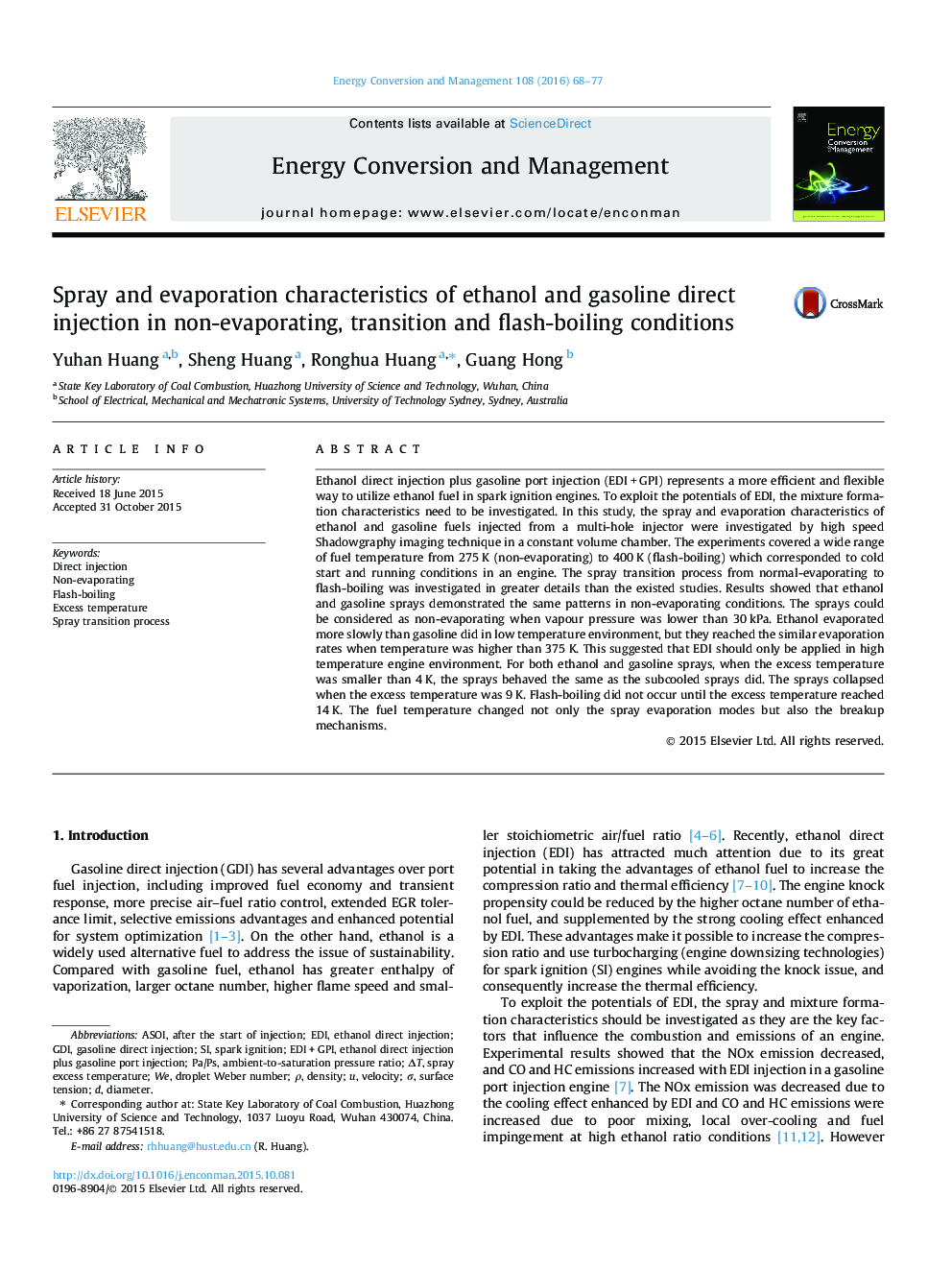| کد مقاله | کد نشریه | سال انتشار | مقاله انگلیسی | نسخه تمام متن |
|---|---|---|---|---|
| 7161406 | 1462854 | 2016 | 10 صفحه PDF | دانلود رایگان |
عنوان انگلیسی مقاله ISI
Spray and evaporation characteristics of ethanol and gasoline direct injection in non-evaporating, transition and flash-boiling conditions
ترجمه فارسی عنوان
اسپری و ویژگی های تبخیر مستقیم تزریق اتانول و بنزین در شرایط غیر تبخیری، انتقال و فلاپی جوش
دانلود مقاله + سفارش ترجمه
دانلود مقاله ISI انگلیسی
رایگان برای ایرانیان
کلمات کلیدی
GDIδtaSOIEDIafter the start of injectiondirect injection - تزریق مستقیمEthanol direct injection - تزریق مستقیم اتانولgasoline direct injection - تزریق مستقیم بنزینspark ignition - جرقه جرقهFlash-boiling - جوش فلزیDiameter - دیامتر یا قطر دایرهVelocity - سرعت برداریDensity - چگالیSurface tension - کشش سطحی
موضوعات مرتبط
مهندسی و علوم پایه
مهندسی انرژی
انرژی (عمومی)
چکیده انگلیسی
Ethanol direct injection plus gasoline port injection (EDIÂ +Â GPI) represents a more efficient and flexible way to utilize ethanol fuel in spark ignition engines. To exploit the potentials of EDI, the mixture formation characteristics need to be investigated. In this study, the spray and evaporation characteristics of ethanol and gasoline fuels injected from a multi-hole injector were investigated by high speed Shadowgraphy imaging technique in a constant volume chamber. The experiments covered a wide range of fuel temperature from 275Â K (non-evaporating) to 400Â K (flash-boiling) which corresponded to cold start and running conditions in an engine. The spray transition process from normal-evaporating to flash-boiling was investigated in greater details than the existed studies. Results showed that ethanol and gasoline sprays demonstrated the same patterns in non-evaporating conditions. The sprays could be considered as non-evaporating when vapour pressure was lower than 30Â kPa. Ethanol evaporated more slowly than gasoline did in low temperature environment, but they reached the similar evaporation rates when temperature was higher than 375Â K. This suggested that EDI should only be applied in high temperature engine environment. For both ethanol and gasoline sprays, when the excess temperature was smaller than 4Â K, the sprays behaved the same as the subcooled sprays did. The sprays collapsed when the excess temperature was 9Â K. Flash-boiling did not occur until the excess temperature reached 14Â K. The fuel temperature changed not only the spray evaporation modes but also the breakup mechanisms.
ناشر
Database: Elsevier - ScienceDirect (ساینس دایرکت)
Journal: Energy Conversion and Management - Volume 108, 15 January 2016, Pages 68-77
Journal: Energy Conversion and Management - Volume 108, 15 January 2016, Pages 68-77
نویسندگان
Yuhan Huang, Sheng Huang, Ronghua Huang, Guang Hong,
